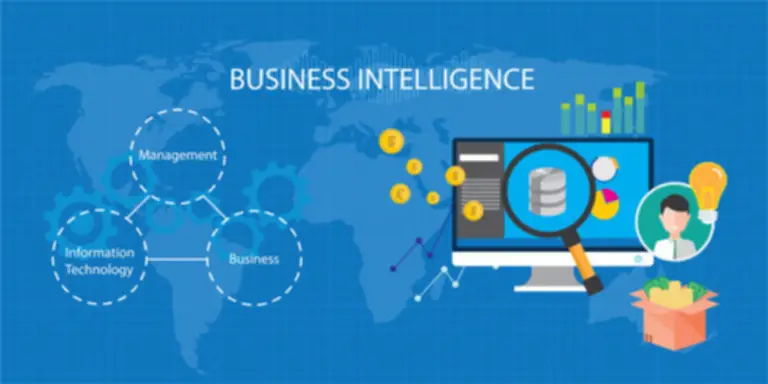To help clients take their cloud strategies to the next degree, MariaDB has launched a Managed Service for public and hybrid cloud deployments. The MariaDB Managed Service goes beyond standard database implementation, backup and restoration, and regular upgrades by offering proactive monitoring, migration, schema modifications, question optimization, efficiency tuning and security updates. Unlike cloud vendors that restrict technical help to database operations issues, MariaDB Managed Service goes the additional mile to precisely diagnose points, establish root causes and work with prospects to forestall https://www.globalcloudteam.com/ recurrent issues. The Managed Service presents three best apply starter configurations for transactions, analytics (standalone or to complement an current on-prem transactional implementation) or hybrid transactional/analytical (HTAP).

New Mariadb Platform X3 Now Out There In The Cloud As A Managed Service
When your utility points queries to Platform X3 for HTAP operations, it would not hire mariadb developers hook up with both the MariaDB Servers or to the MariaDB ColumnStore User Modules immediately. Instead, it connects to a MaxScale server configured to selectively routes queries, making certain that OLTP operations execute on MariaDB Servers and OLAP operations execute on ColumnStore. With the CDC Data Adapter put in you possibly can configure it to stream data to MariaDB ColumnStore.
Configure For Software Traffic
“SQL has been and will continue to be the preferred method for storing enterprise knowledge,” stated James Curtis, Senior Analyst, Data Platforms and Analytics, 451 Research. “One database, any workload” is how the company is pitching MariaDB Platform X3. Since MaxScale routes this question as a transactional operation, the version_comment system variable returns MariaDB Server. If there are not any errors, MaxScale-1 is now operating as a replication slave to Server-1. When you are prepared to install MariaDB Platform X3, go to Downloads and select Platform X3.

Platform X3 Query Routing And Data Streaming
At this point, we have created the financial institution database and tables, and have loaded the data into the MariaDB Servers, (though we solely wrote to Server-1, because the master server it has replicated the data out to the slaves). Issue a CHANGE MASTER TO statement to use the grasp MariaDB Server host (that is, the IP tackle to Server-1) and the port for client connections, (which defaults to 3306). Set the user and password as outlined for the replication router in /etc/maxscale.cnf above.
View All Client Products & Retail

If you use an RPM or APT based mostly distribution of Linux, you’ll be able to configure your server repositories to put in it via the package deal manager. These are the identical command-line options as you’ll use to hook up with a MariaDB Server, but as a substitute of a person server, you connect with MaxScale, which sends the queries to the Servers or to one of the ColumnStore UM’s. From your software server use the MariaDB Client to join with the MaxScale HTAP Service. Here is the configuration file you must have in /etc/maxscale.cnf on MaxScale-2 to realize the above. Serdar Yegulalp is a senior writer at InfoWorld, overlaying software growth and operations instruments, machine studying, containerization, and evaluations of merchandise in those categories.

Monetary Services & Investing Overview
MariaDB Platform X3 is tailor-made to a world the place businesses need to monetize extra of their information in practical ways and in actual time. When you start streaming data, the mxs_adapter utility begins printing logging messages to stdout. As you add data to the MariaDB Servers, you can verify this output to see binary events streaming over to ColumnStore.
- Reports analyzing transaction activities run by the client for individual accounts or by the financial institution on all prospects are OLAP operations.
- When he is not overlaying IT, he is writing SF and fantasy revealed underneath his personal personal imprint, Infinimata Press.
- This person handles streaming data MaxScale retrieves from the MariaDB Servers to ColumnStore.
- On the back-end, changes made to the MariaDB Servers are despatched by way of MaxScale streaming knowledge adapters to ColumnStore, guaranteeing that ColumnStore remains up-to-date.
Since MaxScale routes the question as an analytical operation, the version_comment system variable signifies a ColumnStore server. At a technical level, buying of a milk carton or container triggers an OLTP query, and inventory reporting is an OLAP query. OLTP information is used for logging, and analysis of OLAP knowledge drives understanding of product losses, replenishment patterns, and equipment failures. MariaDB Platform X3 can function from particular person servers, but as your utility grows extra sophisticated and your database workload will increase, each part can scale out to swimsuit your explicit infrastructure wants. “At GiG Sports, we use a combination of cloud and on-prem with MariaDB totally managing the databases for rapid betting information,” mentioned Alan Aquilina, Head of Software Development, GiG Sports.
Pattern Platform X3 Implementation For Transactional And Analytical Workloads

Our pattern deployment requires five servers to run MariaDB ColumnStore to deal with OLAP workloads. Two of these servers function as User Module servers, named UM-1 and UM-2, and obtain software site visitors from MaxScale. The different three function as Performance Module servers, named PM-1 by way of PM-3, and carry out distributed query processing. For OLTP operations, our pattern Platform X3 deployment we start with four MariaDB Servers, configured to run as one master and three slaves synchronized with one another in a MariaDB Replication cluster. In scaling OLTP, you can will increase the number of MariaDB Servers, allowing for high availability, replication backups and failover.
The first steps cover server set up and deployment; the next cover configuration for Replication, Data Streaming, and Application Traffic, and lastly Testing with OLTP and OLAP queries and with DML statements. Additionally, the appliance generates reports analyzing transaction actions. These reports are adapted for categories of shoppers (business, scholar, regular checking, savings) or for forms of transactions (cash deposits, checks, ATM deposits, in-branch deposits, transfers, withdrawals).
With every slave MariaDB Server in your deployment, configure it to replicate data from the master server and start the replication course of. Perform the next operations on each slave server, (that is, Server-2 by way of Server-4). The MariaDB MaxScale server configuration above designates information manipulation statements similar to INSERT, UPDATE and DELETE as transactional and routes these statements to the MariaDB Servers. When all the loaded information has been streamed from the MariaDB Servers to ColumnStore, you’ll start to see Read timeout messages within the output. This signifies that the mxs_adapter utility is now waiting on additional binary events to occur on the MariaDB Servers. In order to higher illustrate how MaxScale distributes queries between the servers, we are going to set up a sample banking database and show how to course of payments and analyze loan information.
This information has been written for the DBA, developer and operator to help you rise up Platform X3 for HTAP queries, unleashing the flexibility to carry out evaluation across events as they are occurring. It is also a deployment that can scale from the small cluster of the examples under to accommodate extra transactions, bigger analytical processing and excessive availability. With MariaDB Platform X3, an group might use a single database each for conventional customer-facing workloads (transactional, or OLTP) and internal business-intelligence workloads (analytical, or OLAP).
When MariaDB Servers run as replication slaves, they replicate knowledge through shopper connections with the master server. In order for these servers to establish shopper connections, create a replication person on the master server, Server-1, and grant the user the related privileges to retrieve the info. The conventional data management method divides infrastructure into transactional (OLTP) systems and analytical (OLAP) techniques. It also prevents software customers from seeing and querying historic information. MariaDB Platform X3 brings collectively MariaDB TX and MariaDB AX in one platform that can uniquely scale out transactions or analytics to support business progress objectives.
